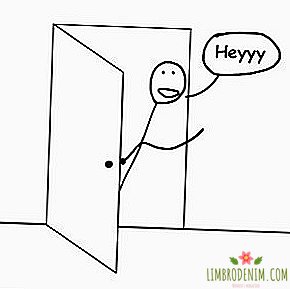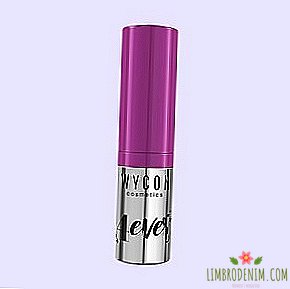Early rejoice: Why fashion is still age-based
A year ago, an unprecedented thing happened in the fashion industry: adult women suddenly became the heroines of advertising campaigns of grand brands. It is mature, not young-looking supermodels in their thirties. The age of the heroes and heroines of five out of ten of the brightest advertising shootings of spring-summer 2015, according to Business of Fashion, ranged from forty-five to eighty. This sudden attention to beauty beyond the age successfully joined the global struggle against any kind of discrimination, and the victorious march of the feminist movement was, in general, a very modern and timely step.

The media rushed to make hasty conclusions that ageism in fashion was defeated once and for all, individuality triumphed over youth, and beauty solely in the eyes of the beholder. But the pendulum immediately swayed in the opposite direction: this spring, Céline, which was represented last year by 80-year-old writer Joan Didion, chose a new envoy - the 22-year-old model Vera Van Erp. The 56-year-old Madonna in the spring advertisement Versace was taken by the 20-year-old superstar of the industry Gigi Hadid (she poses against the background of thirty Natasha Poly, but it is stupid to consider this as evidence of Donatella’s democratism - carefully retouched models look like the same age). Karl Lagerfeld fell most deeply to the source of his youth: in the fall, 16-year-old Lily-Rose Depp became the face of the Chanel points line, and just two weeks ago another contract was announced - with 15-year-old Willow Smith. What was it? Two steps back after a timid step forward?
In reality, the situation seems paradoxical only when looking at advertising shootings. In an effort to quickly make categorical conclusions, we judge by what is more noticeable - advertising bands in gloss, which are actually only part of the brand’s image. An advertising campaign is one of the communication channels through which the conventional Louis Vuitton communicates with its audience, both real and potential. Promotional photos appear mainly in social networks, online media and in print magazines, which are read mainly by people from 18 to 35 years old: the average reader of Vogue US is less than thirty-four. There is nothing to say about the social media audience: 87% of Facebook users are under twenty-nine. This is the target audience of advertising campaigns, and it is on them that the whole effect is calculated from both Gigi Hadid and Joan Didion.
Even if you adhere to the theory that the buyer likes to associate himself with the advertising image, and adult women buy luxury more, then the seasonal shooting still remains the territory of youth. The exceptions that the eye clings to when flipping through glossy pages with young nymphs only confirm this rule. At the same time, there remain a lot of other ways of communicating with customers of a more serious age - from client events to mailings and adult brand ambassadors, who are not being removed for the brand as the heroines of advertising.

Grand-marks marketing teams work according to the principle “both ours and yours” and they do the right thing. According to a study by Dr. Ben Barry from the School of Fashion at the famous Canadian University of Ryerson, it is not the age, color, weight or gender that sells, but a variety of all possible factors. The audience is so many, everyone reacts to such different sets of visual codes in advertising that the only way to swim and not to drown in this stream is not to focus on one type of “beautiful, thin, tall white girl”, but to offer as many options as possible.
The dog on this was eaten by Benetton, who always had a revolutionary approach to the choice of models, and now his example was followed by luxury brands. Age models are only one of the points of this variety, which today sells best when it does not look dull or static. Yes, Chanel's glasses are presented by schoolgirl Lily-Rose, Willow Smith will be removed for some brand segment, but Carl dresses Julianne Moore for big events - along with couture dresses, the 55-year-old actress promotes fine jewelry. At the same time, the ready-to-wear line this season is represented by the popular modeling professionals, Lineisi Montero and Mika Arganaraz - tall, thin, young beautiful girls.
Swinging at all and at once is an extra reminder that fashion is first of all a story about profit, and only then about awareness and social position. Yes, now it is very difficult to separate these two factors, because one is impossible without the other. And yet you need to understand that the seller’s business is to think about revenue. The most honest in this sense is the commercially determined position of the progressive Miuccia Prada, who openly admitted: "I don’t have enough courage to invite age models." True, two years have passed since then, but apparently no major changes have occurred - Miuccia often invites supermodels of zero, returning them to the category of demand. But this is still a model and still younger than thirty-five.
This is confirmed by the journalists of The Guardian, who talked with older models and found out: first, they are subject to the same rigid standardization as their younger colleagues, and secondly, it’s really difficult for them to get a job in advertising cars, mobile phones and expensive clothes. In the latter category, the state of affairs is gradually changing, but rather slowly, and, obviously, for as long as there are commercial reasons.

We live in an era of change, but one should not expect that they will occur simply because several brands simultaneously remembered the existence of wrinkles and gray hair. Obviously, we are witnessing an evolutionary, not a revolutionary process. For example, the age of professional models is gradually increasing: according to James Scully, one of the most influential casting directors and a member of the BoF500 list, of the 350 models that he watched for the Fall-Winter 2014 season, only three girls were under 18 years old. The practice, when teenagers went all the time on the catwalk, is gradually becoming a thing of the past, and the girls, to whom the success in modeling has come at an age that was recently considered to be "retirement" in the industry, is more and more. Take Saskia de Brau though: she was almost thirty when she was noticed.
Perhaps so far this is not enough to loudly declare "all people are sisters," but this is already very much, because over the past few years, the fashion industry from the dream factory has turned into a business with a powerful peg to reality and real women. So far, even taking into account these changes, the choice in favor of very adult models is such a triple toe loop in an arbitrary program, a gypsy exit, media stuffing. But most recently there was not him. In addition, let us recognize that mature women in advertising for premium brands are like the average woman of this age in much the same way as we are like the average young model. They have no thinning hair, noticeable skin pigmentation or problems with posture. On the contrary, these are very beautiful thin adult women who look just brilliant for their age - as brilliant as Cindy Crawford, 50, in Balmain's spring commercial. Exceptions do not count.

Now we should speak more about the marketing power of specific individuals, whatever their age or skin color, than about a massive change in age standards in the luxury segment. A vivid example is the advertising campaign of limited lipstick Dolce & Gabbana, dedicated to 81-year-old Sophia Loren with her in the lead role: about the actress and the shooting speak in extremely enthusiastic expressions. Charisma, talent, experience, success - neither wrinkles nor gray hair can prevent this, the image will sell anyway, and the brands understood it.
A good example is how Lancôme "thought better of it" by resuming cooperation with Isabella Rossellini. In the nineties, the brand terminated the contract with her as soon as she turned forty. Now the actress is sixty-three - and she is again in demand. This is very much in the spirit of the times and very logical, especially for cosmetic brands that, in unison, began to protect the wrinkles of adult models in advertising: it dawned on them that no one believes the action of anti-aging remedies that a woman around 45 has with perfectly skinned skin. Well-known adult women in good shape are very necessary for the industry - largely because Catherine Deneuve is still a friend and honorary guest of Louis Vuitton shows, although the brand itself has long since moved into the cyber reality of the next millennium.
In all this versatile, gradual and logical process there is one funny paradox - the most honestly advanced was not too progressive brand Dolce & Gabbana, which from season to season invites to shoot models with very different looks. True, again, they always serve rather as a background for catwalk young beauties, plus it works only because it fits into the concept of the “big Italian family”, but it’s a fact. Italian designers (or their employees) clearly understand that fashion as part of popular culture, as part of the reality in which you and I live, is definitely included in the global process of fighting ageism. But to start shouting “a new era of beauty!” As soon as a few brands found a successful commercial move and attracted beautiful mature people, until it is worth it. We are only at the beginning of change.
Photo: The Dreslyn, Cyrille Gassiline, Chanel, Versace, Dolce & Gabbana





